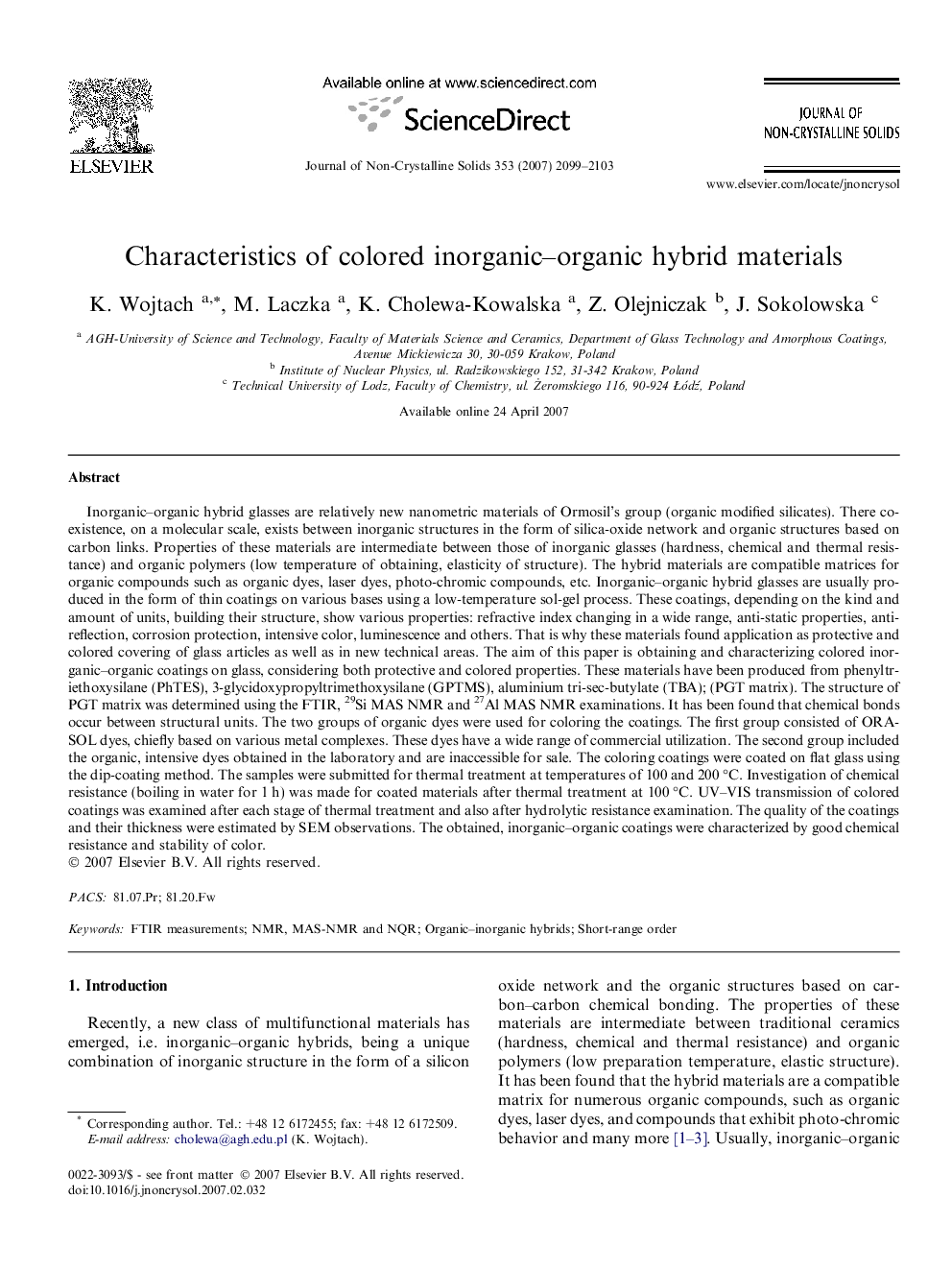| کد مقاله | کد نشریه | سال انتشار | مقاله انگلیسی | نسخه تمام متن |
|---|---|---|---|---|
| 1485418 | 1510538 | 2007 | 5 صفحه PDF | دانلود رایگان |

Inorganic–organic hybrid glasses are relatively new nanometric materials of Ormosil’s group (organic modified silicates). There co-existence, on a molecular scale, exists between inorganic structures in the form of silica-oxide network and organic structures based on carbon links. Properties of these materials are intermediate between those of inorganic glasses (hardness, chemical and thermal resistance) and organic polymers (low temperature of obtaining, elasticity of structure). The hybrid materials are compatible matrices for organic compounds such as organic dyes, laser dyes, photo-chromic compounds, etc. Inorganic–organic hybrid glasses are usually produced in the form of thin coatings on various bases using a low-temperature sol-gel process. These coatings, depending on the kind and amount of units, building their structure, show various properties: refractive index changing in a wide range, anti-static properties, anti-reflection, corrosion protection, intensive color, luminescence and others. That is why these materials found application as protective and colored covering of glass articles as well as in new technical areas. The aim of this paper is obtaining and characterizing colored inorganic–organic coatings on glass, considering both protective and colored properties. These materials have been produced from phenyltriethoxysilane (PhTES), 3-glycidoxypropyltrimethoxysilane (GPTMS), aluminium tri-sec-butylate (TBA); (PGT matrix). The structure of PGT matrix was determined using the FTIR, 29Si MAS NMR and 27Al MAS NMR examinations. It has been found that chemical bonds occur between structural units. The two groups of organic dyes were used for coloring the coatings. The first group consisted of ORASOL dyes, chiefly based on various metal complexes. These dyes have a wide range of commercial utilization. The second group included the organic, intensive dyes obtained in the laboratory and are inaccessible for sale. The coloring coatings were coated on flat glass using the dip-coating method. The samples were submitted for thermal treatment at temperatures of 100 and 200 °C. Investigation of chemical resistance (boiling in water for 1 h) was made for coated materials after thermal treatment at 100 °C. UV–VIS transmission of colored coatings was examined after each stage of thermal treatment and also after hydrolytic resistance examination. The quality of the coatings and their thickness were estimated by SEM observations. The obtained, inorganic–organic coatings were characterized by good chemical resistance and stability of color.
Journal: Journal of Non-Crystalline Solids - Volume 353, Issues 18–21, 15 June 2007, Pages 2099–2103